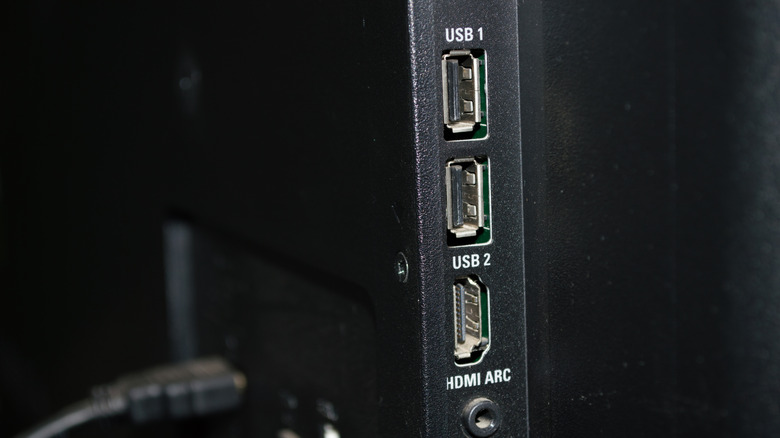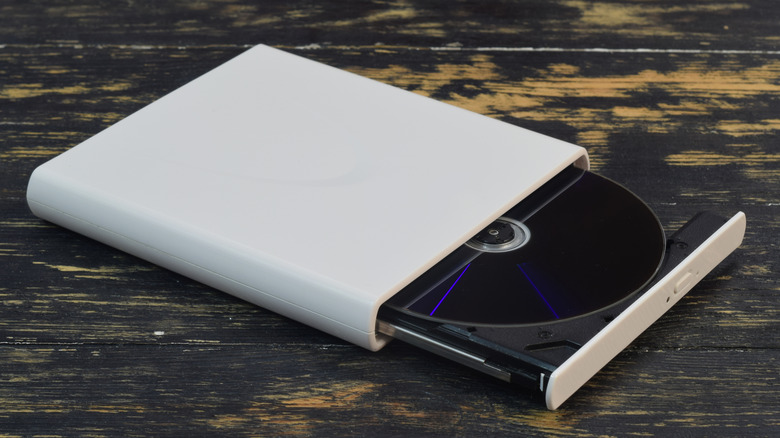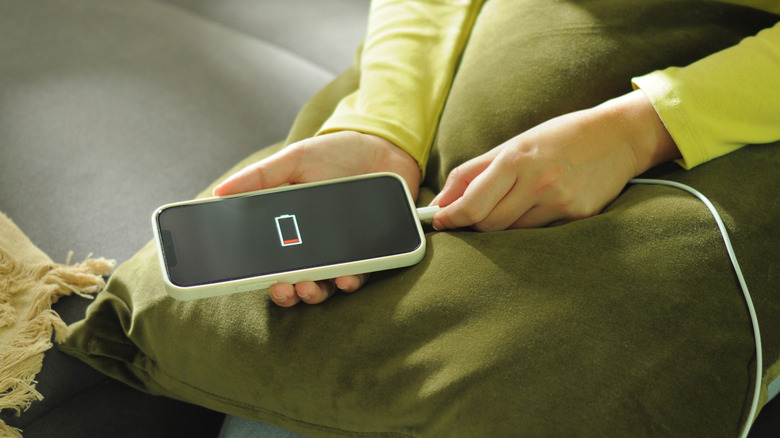Don't Plug These Gadgets Into Your TV's USB Ports
It's common for modern televisions to feature one, if not more, USB ports for a variety of uses. While many of us primarily use these USB ports to connect a flash drive to play videos and other multimedia content offline, or use them to power devices like a streaming stick or bias lighting, there are other uses. You can also update the software on certain TVs without internet access, and connect game controllers to certain smart TVs as well. Some TVs also support recording live TV content to USB storage media.
However, that doesn't mean you can plug in any USB device to these ports and hope for it to work seamlessly. A TV's USB ports, although reasonably capable, aren't as feature-rich or versatile as the ones available on your computer, and have limited power delivery capabilities. Here are some of the most common gadgets that won't work if you connect them to your TV's USB port.
Devices that may need a special driver
Modern TVs are considerably smarter and have a lot more software than the "dumb" TVs of the past. However, that doesn't mean they include the special drivers needed to run many of the USB devices that we regularly use with our computers. As a result, gadgets such as your PC's external optical drive, USB printer, or photo scanner won't work when connected to your TV's USB port: Each of these devices needs a driver to be recognized, and you can't install the drivers required for such gadgets on your TV due to software restrictions that other Windows devices aren't impeded by.
There are some exceptions to this, such as the optical disk drives that have a TV connection mode. However, these drives are uncommon and don't always work as intended with certain televisions. Similarly, Android apps like PrinterShare and Printhand can be sideloaded to your Android TV to run select USB printers, but this process is cumbersome, requires a premium plan, and isn't guaranteed to work; these apps are designed to be used with your phone and tablet.
Smartphones and tablets for charging
Although many of us occasionally connect our phones and tablets to our computers to get a bit of charge, doing the same with your TV's USB port won't be very helpful. Most modern TVs come with USB 2.0 ports that can deliver a meager 5V at 500mA. This means you'll get around 2.5W of power. Some TVs may have a USB 3.0 port capable of providing 5V at 900mA (for a total of 4.5W), but that's relatively uncommon. In both cases, the power offered by your TV's USB port is simply too little to deliver any meaningful charge in a reasonable amount of time.
In a pinch, you can leave your device connected to your TV for charging, but it'll take a long time for the battery to top up to any significant level. Apart from desperate circumstances, a TV's USB ports aren't suitable to charge your phone, tablet, or other mobile devices with a big battery, such as laptops and handheld gaming consoles.
However, you can use your TV's USB ports to juice up low-power devices, such as mobile accessories, especially if there is a USB 3.0 port onboard. You can recognize the generation of USB ports by the color of their plastic insert: blue means USB 3.0, black means USB 2.0, and yellow means USB 3.0 or 2.0 with passive power delivery support.


